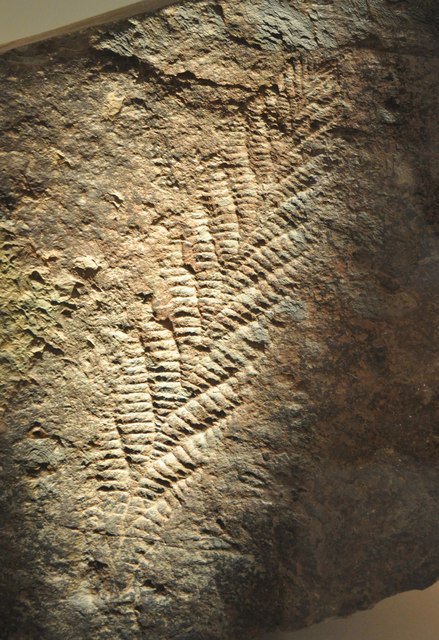 |
| The fern-like Charnia masoni is an animal, but one so similar to plants, that it makes defining the origins of plants very difficult |
The last two kingdoms are a little harder to pin down. Recently, protoctist fossils were discovered in western Australia which were dated to 700 million years old. The origins of plants, however, are harder to define as this requires detailed examination of cellular structure within micro-fossils to determine whether they are plants or not. Similarities to early, fern-like members of the Ediacara biota also clouds our sights. Yet genetics may provide an answer.
Studying the genomes of the modern day descendants of early organisms allows us incredible insight into their evolutionary history, more accurate even than fossil evidence. By analysing the genes of the freshwater glaucophyte algae Cyanophora paradoxa, an international team of scientists, led by molecular bioscientist Dana Price of the University of Queensland, Brisbane, has provided evidence into the structure and origins of the very first plant cells on Earth.
The analysis showed that plants and algae, a group of protoctists, share a common ancestor. Traces within the genome showed that many sections of its genes were acquired from undergoing a 'merger' with other micro-organisms in a process known as endosymbiosis, where one creature lives inside another and both organisms provide service for the other. A perfect example of this is the numerous colonies of bacteria which live within the gut, breaking down food into absorbable nutrients such as glucose.
As the two organisms live side by side, they swap sections of genetic information until the separate cells become one single entity. Apart from bonding with a domesticated photosynthetic bacterium known as a plastid, which would eventually evolve into the green chloroplasts in plant cells, the host protoctist would also need to bond with a parasitic bacterium, examples of which include Chlamydia or Legionella, whose genes would allow for the transfer of food molecules from the plastid to the host cell.
 |
| The final model of the first ever plant cells |
Evidence for such a merging process comes from an amoeba called Paulinella, whose genome shows that it domesticated photosynthetic cyanobacteria for use as fuel generators around 60 million years ago. As a merger takes so long to complete, the photosynthetic structures in Paulinella still bare a definite resemblance to their free, cyanobacterial ancestors. Using the data, the scientists were able to reconstruct an image of what this first plant cell may have looked like.
The final model was actually more complex than they originally envisaged. It is thought that the merger took place around 1.6 billion years ago. It is likely that the oceans had become so crowded with primitive forms of bacteria that many of their metabolic resources such as sulphates were in such short supply, that organisms had to find a new way of gaining energy in order to survive. The sun was the most abundant source at the time.
Therefore the successful bacterial groups underwent a merger to become the first ever super-organisms on Earth: plants. They had the ability to harness the power of solar radiation to smash apart carbon dioxide and water and reform this into energy-rich glucose. Eventually they would go on to form the first true ozone layer, allowing life to move onto the land, drive the evolution of insects and mammals amongst others and carve their mark into the rocks of the Earth all due to this single, vital evolutionary event.